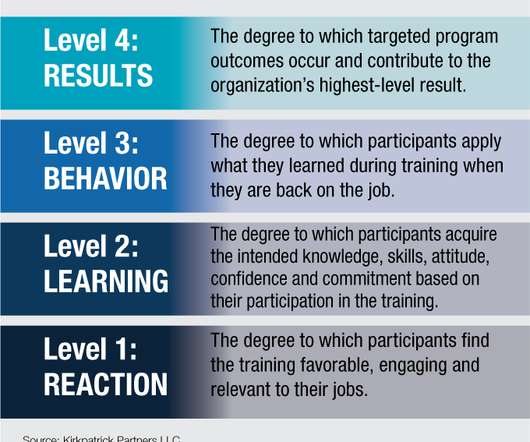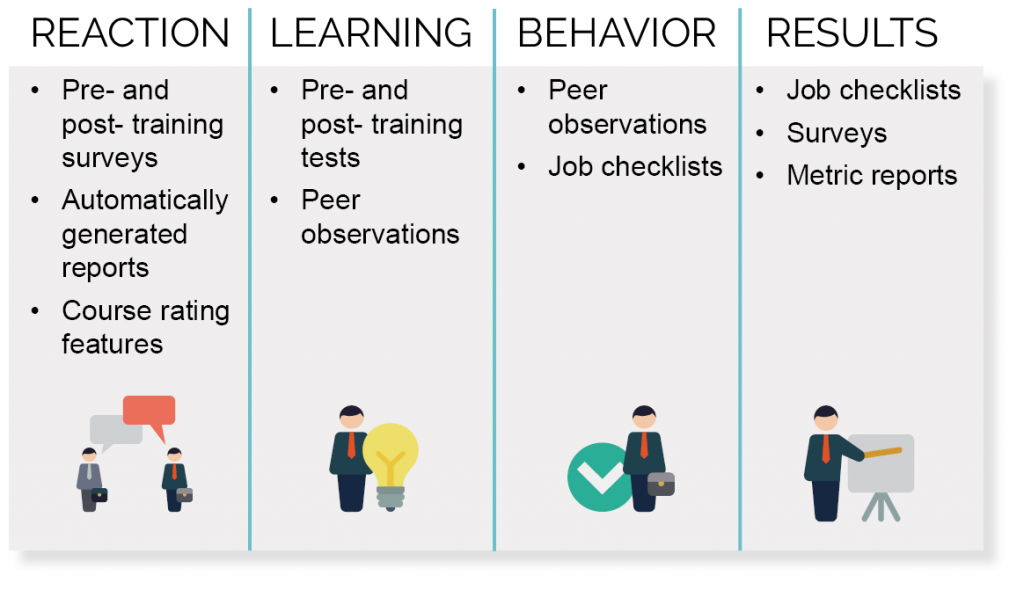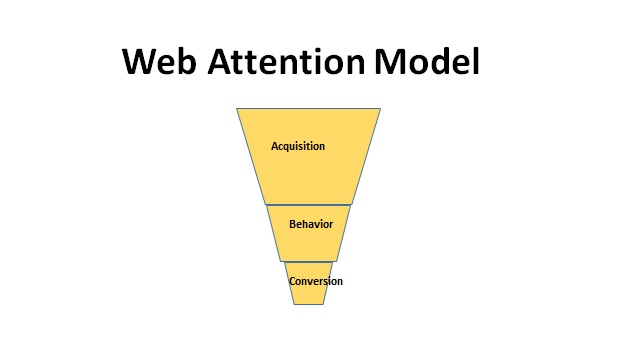3 phenomena of pedagogical lifecycle:
- Memory level
- Understanding level
- Reflective level


Google analytics tool:
There are different stages within the funnel that describe user interactions. A basic purchase funnel includes the following steps:
- Acquisition involves building awareness and acquiring user interest
- Behavior is when users engages with the business
- Conversion is when a user becomes a customer and transacts with the business.

Research abstract for building learning analytics:
The usage of learning management systems in education has been increasing in the last few years. Online content is being generated out of the interaction by students, teachers, parents, administrators of school education and multiple stakeholders are involved in educational system. With the availability of tools, online activities effectively replaces traditional method of evaluation. This resulted in the penetration of big data technologies into education, to process the large amount of data involved. The article aims to analyse the characteristics of the nation’s learning management system called DIKSHA where big data is involved. Then compared it with Google analytics reports for effectively delivering solutions. While building learning analytics, there are different kinds of data attributes to be gathered and categorized. Without getting into technical analysis, the article communicates the scope of learning analytics in foregoing challenges in the current educational setup.

Learning in the classroom was based on three models namely behavioral, cognitive and constructivist models. The behavioral models rely on observable changes in the behavior of students, to assess the learning outcome. The cognitive models are based on the active involvement of teacher which helps in guided learning. However, in the constructivist models, personalized learning framework is given emphasis so that the students build on their knowledge from the available resources.
As the constructivist framework effectively replaces traditional methods of learning, some of its tools and techniques are analyzed for building learning solutions for effective service delivery to users. “Big Data” aids the tools and technologies employed in learning management system. So, it is imperative to understand the term “Big Data” which refers to any set of data that is so large or complex whereby conventional applications are not adequate to process them. Examples of Big Data include the amount of data shared in the internet every day, YouTube videos viewed, twitter feeds and mobile phone location data. In the recent years, data produced by learning environments have also started to get big enough raising the need for Big Data technologies to handle them.
Research in education has resulted in several new pedagogical improvements. In the current learning environments, users learn in online communities like discussion forums, online chats, instant messengers, and various learning management system like MOODLE. Recent learning methods like flipped classroom greatly depend on online activities. Several frameworks and models have been proposed for online learning management systems to improve the learning experience.
As the learning environments become accessible anywhere through the internet, students access their courses anywhere and indulge in learning activities. Student’s activities through learning management systems create large amount of data that can be utilized in developing the learning environment, helping the students in learning and improving the overall learning experience. In addition to the data availability from student activities, data are also created by educational institutions which use applications to manage courses, classes and students. Due to the limitations of the conventional data processing applications, the educational institutions need to explore “big data” technologies to process the educational data.
DIKSHA, an open source technology incorporates internet scale technologies and enables several use-cases and solutions for teaching and learning. The platform is designed to run programs for teachers and learners. Every participant on the platform could create one or more of their own curriculum frameworks linked to classroom learning or teacher professional development. Therefore, efficient framework infrastructure enables personalized learning to leverage artificial intelligence and machine learning algorithms.
In the offline world, this process of building a framework for personalized learning can be hard to measure due to uniqueness of every learner. But in a digital world, measurement of many different aspects of the content usage datasets is done through learning analytics. By tracking the online behavior led to conversion data, helps to make informed decisions in rolling out structured learning or training programs.
Google Analytics is a machine learning platform that collects data and compiles it into useful reports by artificial intelligence. To track a website or app, it could use a small piece of JavaScript tracking code, when added to each webpage. Every time a user visits a page, the tracking code collects anonymous information about the user’s interaction. When the tracking code collects data, it packages that information and sends it to Google analytics to be processed into reports. When Analytics processes data, it aggregates and organizes the data based on particular user’s criteria and it’s stored in a database where it can’t be changed.
Similarly in DIKSHA platform, framework greatly helps content to be tagged to solutions like energized textbooks, quiz, question bank tools. In order to create one or more of the states/education boards own curriculum frameworks, classroom learning and teacher professional development are linked to it. Thus states/UT’s and central institutions have the independence to define their curriculum scope in their own local language onto the platform. So, each state/UT leverages the DIKSHA platform in its own way having the freedom and choice to use framework capabilities.
Let us discuss about Google analytics reports by comparing it with DIKSHA’s solution to build learning analytics solution.
How Web Attention Model correlates with the life cycle of pedagogy material?

Real-Time reports in learning analytics looks at live user behavior on the platform including information like where users are coming from and if they’re converting. Real-time data of schools helps in the periodic assessment of events by BRC(Block Resource Centre) or CRC(Cluster Resource Center) or DISE(District Information System for Education) at the decentralized level.
Audience reports in learning analytics shows the characteristics of users like age and gender, demography of states, whether they’re new or returning users, what technology they are using and their interests in engaging with the published content.
DIKSHA platform allows all users be it teachers, students, parents or others to access their curriculum linked digital content, published by center, states/UTs or education boards, using any device mobile, laptop or desktop in online or offline mode. Thus enabling multiple modes of access for new users as a guest user, or returning users registered with an account on DIKSHA or using the state system. The guest user mode enables easy access for new users while returning users are able to define their preferences and personalize their experience in the platform.
Acquisition Reports in learning analytics provides which type of users access the contents in the platform to achieve the objectives of school education, early learning, foundational learning, inclusive education, teacher training and several others. The framework of tagged content allows to channelize the traffic source of returning users along relevant grade, medium and topic. The users will be able to access online courses for every chapter by scanning QR codes in the textbooks. The energized textbook solution enables a student to visualize a concept in the textbook or watching a video by scanning QR code. While teachers can have instant access to pedagogical best practices for each chapter according to the needs of the user. Thus, framework capabilities helps the organization in categorization of content on the platform and serves for easy discovery of content by users.
One such capability is the question bank tool which are used for creating practice worksheets and tests for energized textbooks, assessments for Online Courses or Quizzes. For interactive questions, the question bank tool gives feedback to the user on their choice of answers. So, question bank tags questions to various attributes of framework. This leverages DIKSHA’s machine learning platform to deliver personalized learning environment.
This report shows the evaluation at the memory level of individuals. An online course can contain learning material using a mix of videos, interactive content, practice questions, and reading materials as well as an assessment to evaluate learning. The user participation establishes their thoughts by linking the questions to learning outcomes while its usage data can be used by national and state governments for actionable insights. Thus, the assessment of learning outcomes leads to plan targeted programs for teachers and students to reduce learning gaps systematically. Such reports allows for detailed monitoring of course enrollment for states/UTs and education boards to manage the rollout of large scale training and professional development programs. States have used the DIKSHA platform to ensure continuity of teacher training at home to overcome challenges of in-person training. It provides teachers a series of short courses on a weekly basis linked to specific training objectives.
NISHTHA, a national teachers training program is targeted for teachers, rolled out on DIKSHA by NCERT using online courses. Total enrollments by teachers for courses and the rate of completion of the courses across states and CBSE is being assessed. With the help of learning analytics structured learning programs are rolled out to build or enhance specific knowledge and skills for learners.
Behavior reports in the learning analytics shows how people are engaging on the site including which pages they viewed, their landing and exit pages.
DIKSHA has a content sourcing tool that supports multiple models from a pre-selected set of individuals or organizations, crowdsourcing from masses- both organization and individuals and re-using digital content already published on the platform. It also has a content authoring tool that provides a curation process so that the concerned department of center/state rolling out learning/training programs can ensure only good quality content is published. Thus, the digital content sourced can be of diverse variety including explanation videos, questions of various types, sample tests, lesson plans, and other pedagogy material.
At this level, evaluation is meant to gauge the understanding level of participants to develop expertise, knowledge or mindset. Content developers can use it to create a loyal, highly-engaged audience thereby better aligning the educational goals along with user interests. The Center and states leverage such tools to engage the ecosystem of their teachers, different government institutes, community of organizations and individuals at large. Teachers across the country use different teaching techniques to help their students effectively. Therefore, learning is enhanced by enabling translation of digital content from one language to another to adopt best practices.
A dashboard of content usage reports helps to understand the content needs and continuously improve the digital content quality. Thus, the behavior reports helps to manage a large set of contributors, reviewers for curation and track overall progress of content sourcing program.
VidyaDaan is a national program for educationists, subject experts, schools, government, and non-governmental organizations, individuals to donate or contribute open resources for school education. States/UTs can have their unique frameworks for inviting contributions for all grades and across different languages. Thus tapping into the combined intelligence of the platform and experience of the teacher ecosystem to source best content for all students and teachers across the nation.
Conversion reports in the learning analytics allows to track educational goals based on the objectives of the program. Thus, the reports gives multiple stakeholders the ability to see across the entire life cycle of learning to create pedagogical material.
Winning the quiz to earn digital credentials can be an effective way to engage, students/teachers in enhancing their learning and application of their knowledge relevant to curriculum. Thus, the users are recognized to generate a digitally verifiable credentials and share their skill building accomplishments with their friends and colleagues received on course completion.
This is a reflective level of evaluation where the amount of time invested in developing skills and knowledge allows the user to earn rewards as digital credential. This report from the platform enable center and state government to issue digital credentials for various purposes like best teacher awards on successful course completion.
DIKSHA platform makes the data in the learning analytics to be available to training heads and course administrators on how many teachers are completing courses with insight into the types of courses that teachers need and require. Various solutions be it energized textbooks, online courses, quizzes or others combines with specific actionable reports from analytics can monitor progress of state programs and take necessary actions to drive the programs. The entire education ecosystem including educationist, experts, organizations, institutions – government, autonomous institutions, non-government and private organizations participates, contribute and leverage a common platform to achieve learning goals at scale for the country. So, when the platform is designed for learning analytics, aggregated data can be categorized along various dimensions and metrics to monitor programs and customize along the needs of the user.

Recent Comments